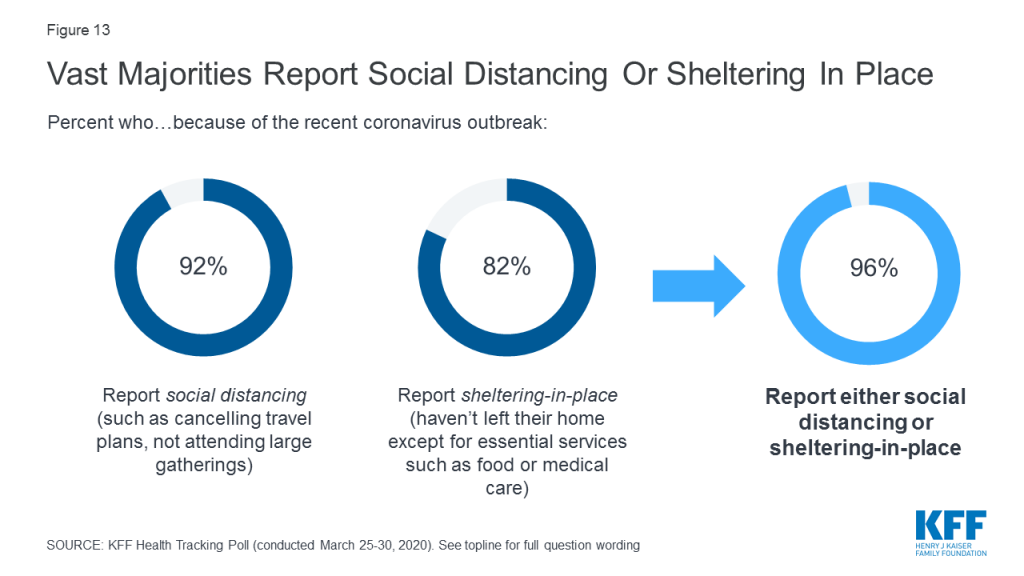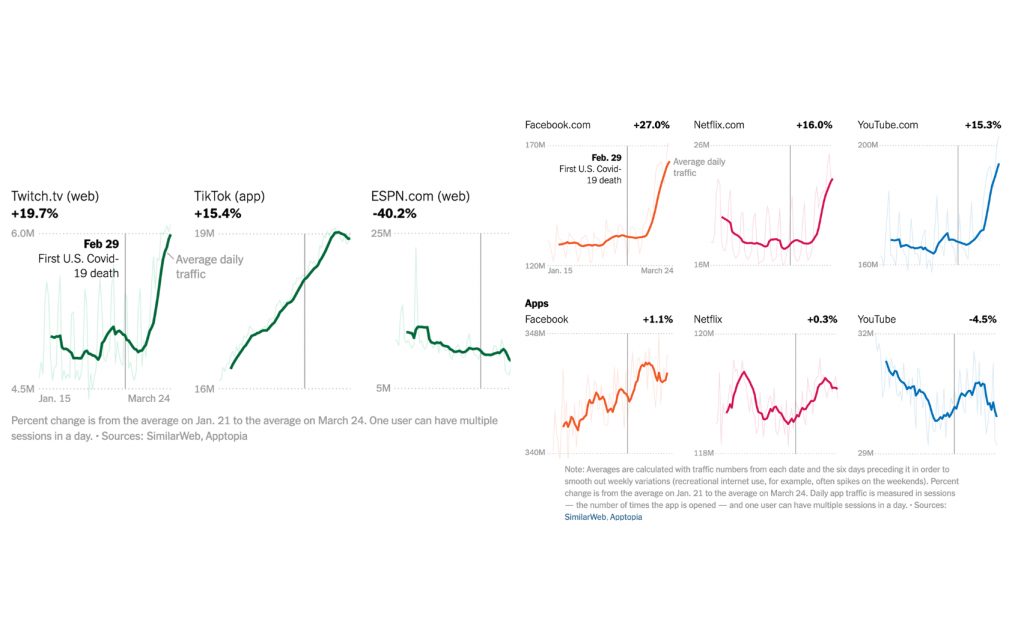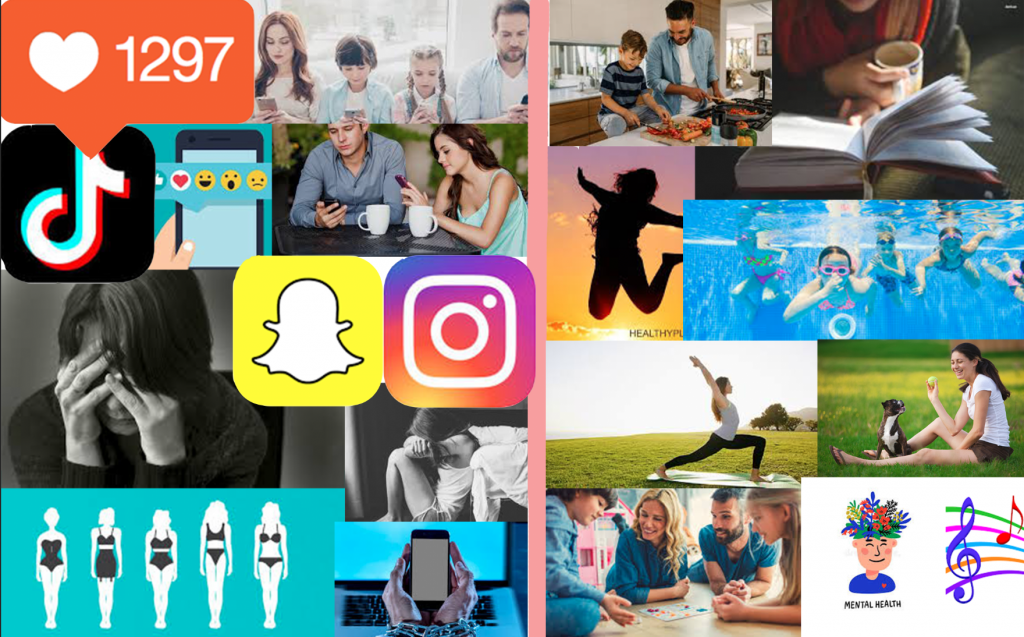About 40% of the world’s population, three billion people, use social media. In the last decade, the development of online networking has been so rapid, and its impact so vast that it is unclear how much it has affected normal aspects of human behavior and psychiatric behaviors. However, several studies have indicated that the prolonged use of social networking sites, such as Facebook, Instagram, Snapchat, Twitter, and TikTok, may be related to signs and symptoms of depression. With current pressing issues regarding the COVID-19 virus, the combination of isolation, business, and school closures, and increased dependency on technology, exposes many people to experiences situations that are linked to poor mental health. This can range from isolation to job loss, leading to financial distress and anxiety.
Before the COVID-19 Pandemic
- Teens who spend 5 or more hours online were more likely to 71% more likely to have at least one risk factor for suicide compared to teens who spent 1 hour a day online
- In a studying using Facebook, Twitter, Google, Youtube, Instagram, and Snapchat, those who visited any of the platforms more than 58 times per week, were 3x more likely to feel socially isolated
- 44.7 million of adults 18 or older in the US have a mental illness
Social Distancing and How We Spend Our Boredom
With the Coronavirus causing for states to implement a state-wide curfew, stay at home orders, the closing of all nonessential businesses and nonprofit entities, keeping 6 feet away from each other, and avoiding traveling or any public gatherings, it has caused for people to practice social distancing. Many people practice this by staying at home and only leaving for emergencies, such as buying groceries. It is preached that social distancing helps limit contact with infected people and spread of the virus, as everyone has a role to play in slowing the spread to protect their friends, family, and community. In figure below, 96% of people report of either social distancing or sheltering in place. Due to increased amount of time spent at home, people have more time to go on their phones. Although this time can be seen as a period of relaxation and time off from working, the content on social media apps have drastically shifted. I have noticed on my explore pages on Instagram or my “for you” page on TikTok that it is now popular to start working out and going on a diet. With a combination of the idealistic “summer body” teenagers strive to have and influencers endorsing the idea of working out and how to lose weight, the mental health of teenagers after the start of COVID-19 to increase.

Now, I’m not endorsing the idea that working out is a bad thing. However, when main videos and pictures on your feed are of people spreading false information on what is a perfect day in the life or a transformation of their bodies, it can negatively influence young adults. In relation to adults and parents who use social media, online networking is prone to the spread of misinformation. Many of the facts people read online aren’t fact checked, causing for unnecessary anxiety and stress. According to a study used with users of Reddit, 57.6% said that their overall mental health has been worse with their use of social media. Limiting the amount of screen time, especially on news regarding the virus, has made a positive impact, as 43% of people who do so are in a better mental state.
Application Usage

As you reflect on how you have spent your time in quarantine, it’s probably similar to the way the graphs look. Go into your settings and look at how your screen time has increased since being home. I nearly have 10-12 hours of screen time from my Iphone settings, with Instagram, Snapchat, and TikTok being my top applications. Try to also think about where you get your facts on apps and if they are actually a reliable source.
The latest KFF Health Tracking poll, conducted from March 25-30, 2020, found 7 out of 10 Americans (72%), reported that their lives have been disrupted “a lot” or “some” by the coronavirus outbreak. This is a result of a 32% increase compared to the poll released two weeks before. This can be a result of a large amount of factors, however, Americans have reported that they have experienced stress and anxiety related to the coronavirus. I can attest to some of stress and anxiety others may have as I have been sent home from college, with no knowledge of when the school will reopen, needing to find internships or jobs for an income, and trying to help my parents in whatever way possible.
COVID-19 Collage and Social Media Impact

The current problem is that as people have been physically isolated from one another, there is a desire to turn to their screen. While it is easy to justify the use of your phone or laptop by saying you deserve a break from work or college, it comes to a point where it’s too much. This can inevitably lead back to trying to keep up with the trends and wondering how you are going to be seen after quarantine, physically and mentally. It’s hard to avoid these mindsets or to follow a schedule when you’re not on your phone, but try to go outside more, at a safe distance from others, and hang out with the people you are with. It is better worth your time to spend this time, which you can’t get back, with the people you love. Every week, my next door neighbor’s family comes to visit them and they set up beach chairs 6 feet from each other and eat lunch. It shows how there are so many different ways you can interact with others in a safe manner. Social distancing and quarantine doesn’t mean you have to be stuck in your house with no interaction. Mental health can overcome someone really easily and it’s important to avoid falling into the traps that social media causes. Especially in a time where news and sources are always being questioned, make sure you get your facts in regards to the virus from reliable sources. It can cause anxiety and stress that you shouldn’t have to experience.
Sources
- Too Much Time Spent on Social Media Is Taking Mental Health Toll on Users During Coronavirus Pandemic: https://www.forbes.com/sites/petersuciu/2020/05/01/too-much-time-spent-on-social-media-is-taking-mental-health-toll-on-users-during-coronavirus-pandemic/#53720f3947a7
- The Virus Changed the Way We Internet: https://www.nytimes.com/interactive/2020/04/07/technology/coronavirus-internet-use.html
- The Impact of Coronavirus on Life in Americahttps://www.kff.org/health-reform/report/kff-health-tracking-poll-early-april-2020/
- Online Social Networking and Mental Healthhttps://www.ncbi.nlm.nih.gov/pmc/articles/PMC4183915/